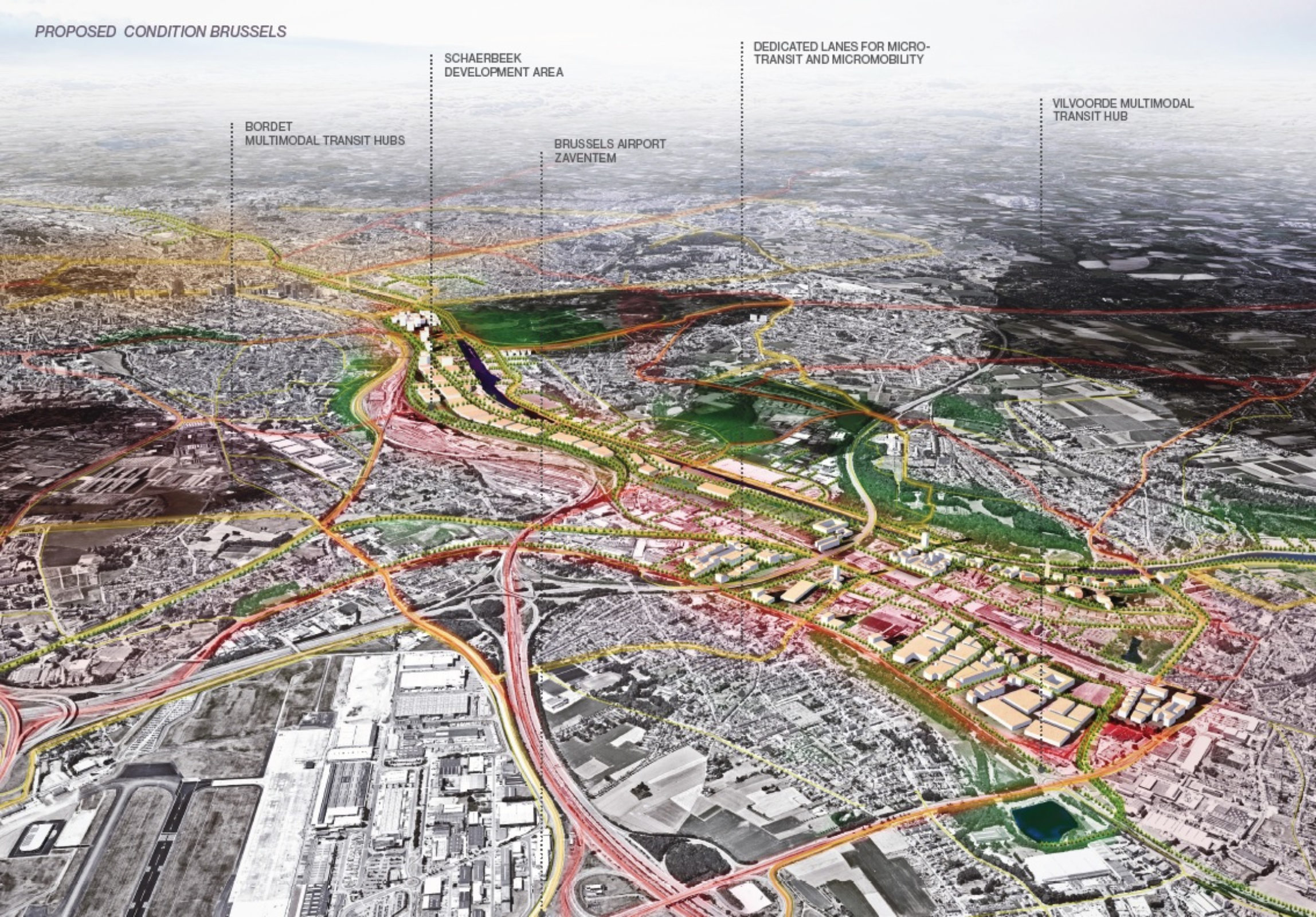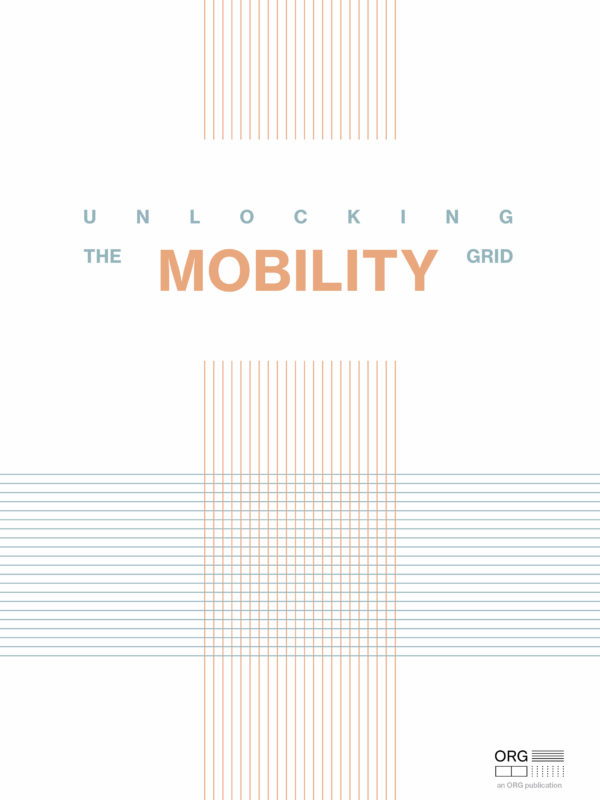SEAMLESS DECENTRALIZED MOBILITY

Decentralized Seamless Mobility: Unlocking the Belgian mobility gridlock through urban planning and technological innovation, a study by ORG Permanent Modernity in collaboration with Deloitte Belgium and MIT School of Architecture and Planning. Commissioned by Realty Belgium.
Brussels Seamless Mobility Study was a comprehensive research project focused on transportation issues in Belgium and centered on two main cities, Brussels and Antwerp. The study looks at congestion, overall traffic volume, and methods for implementing on-demand and clustered public and private commuter services. This ‘seamless decentralized mobility’ is a newly conceived network of hubs and spokes, designed for current and emerging mobile technologies and strategically positioned in an intermediary zone along the urban transect; between the dense urban core and the suburbs.
This intermediary zone presents enormous opportunities for relieving pressures, both on transportation congestion, as well as on metropolitan densification of uses; two pressures that require intelligent alignment. Performance enhancement of the mobility sector in these zones is inevitably linked to new development opportunities, from perspectives that relate to infrastructure, financing, and economic sustainability, as well as regional commuting patterns and quality of life. Presented at Realty Belgium Summit 2019.

In recent years, the Belgian transportation system has experienced increasing congestion due to a growing gap between its built environment, spatial configuration, and the current mobility service capacity and technological offerings. This trend of increased congestion is particularly affected by the systematic over-reliance on personal vehicles, in a context of high density yet isolated from services land-use patterns. As a result, the predominant Belgian commuting pattern is overly inter-suburban, circulating between office parks and suburban residential neighborhoods. In this context, the traditional conception of public mass transit as a means to mobilize large populations between and within urban centers is simply not suitable.
Therefore, this study came to propose a hypothesis of ‘seamless decentralized mobility’ as a newly conceived network of hubs and spokes, designed for current and emerging mobility technologies. These are strategically positioned in an intermediary zone along the urban transect; between the historical urban core, and the metropolitan periphery. This study suggests that this intermediary zone presents enormous opportunities for relieving pressures, both on transportation congestion, as well as on metropolitan densification of uses; two pressures that require intelligent alignment. Performance enhancement of the mobility sector in these zones is inevitably linked to new development opportunities, from perspectives that relate to infrastructure, financing, and economic sustainability, as well as regional commuting patterns and quality of life.
Location
Antwerp and Brussels, Belgium
Year
2019
Team
Alexander D’Hooghe, Kobi Ruthenberg, Mae Emerick, Ana Dresler, Aleksandr Čebotariov, Yannick Vanhaelen
Clients
Realty, Easy Fairs
Mission ORG
Urbanism, Feasibility Study
Program
Transportation
Collaborators
MIT SA+P, Deloitte
Related Updates





